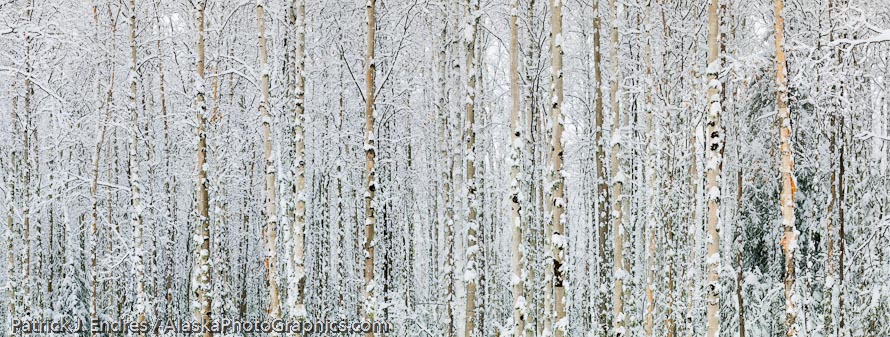Store front window display by ChadMichael Morrisette, utilizing my panorama image as a background.
Every once in a while I get a little feedback from a photo buyer and let me place an emphasis on “once in a while”. Yesterday, I received an e-mail from a designer (ChadMicahel Morrisette) who purchased a photo for use in a store front window display. The photo–a snow covered boreal forest of birch trees– is of particular interest to me because it was taken from the deck of my house, it was winter, and the subject of trees have always intrigued me. I’ve often thought that if Thomas Pakenham did not already publish his very cool book: “Remarkable Trees of the World”, I’d make that my next personal photo assignment.
Upon reflection, I never imagined while taking the photo, that it would be used as a window display. This is not surprising, but it is a good reminder that when photographing “stock imagery”, it’s a good idea to think broadly about your subject, and photograph it in different ways. In this case I made a panorama image by stitching five frames horizontally. I also photographed it as a single still image as well. The longer format of the two suited the store front wrap.

Snowy birch trees in Fairbanks, Alaska. Panorama stitch from 4 files.
Early in my career I modeled my photographic style and subject material largely from the motif of the Sierra Club calendars and other respectable nature beauty images. This is the style of fine art prints, those pictures that are self sustainable through strong composition and dramatic light and color. They still are my favorite type of image to capture, but stock photography requires a different set of parameters. Generally speaking open space is essential in stock photography, and a more mild or muted color palette is often preferable. This is so because the image itself should compliment and not compete with the copy or add material that is used in conjunction with it. If you look at successful stock photography, specifically background imagery, the image alone is often not striking in and of itself. But it works well with the layout and copy. Pick up your favorite magazine and look at the advertisements within the magazine that use background imagery and you will see what I mean. You will notice very few dramatic, strongly colored images. So when photographing stock it’s something essential to keep in mind.
There is a lot going on in the process of acquiring a photograph but it does one well to think broadly and photograph the scene in a variety of ways, which produces an image more versatile for today’s challenging photography marketplace.






